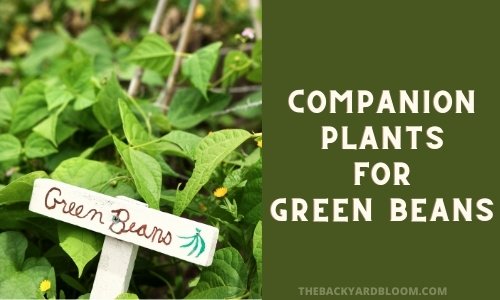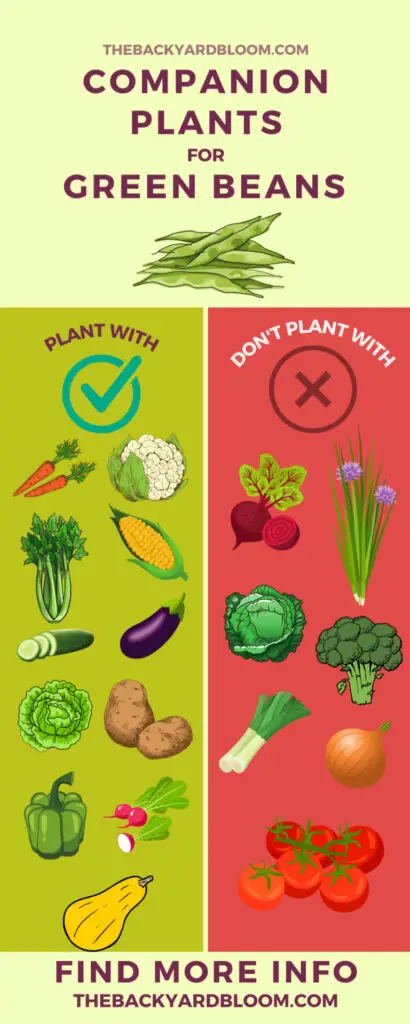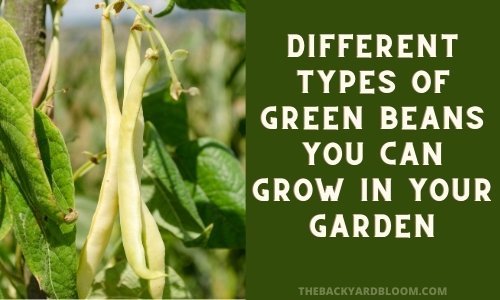Please note that this post may contain affiliate links. You can read my full affiliate disclosure at the bottom of the page.
Green beans are a very popular crop to use in companion planting due to them enriching the soil with nitrogen. Nitrogen can help improve growth in many other crops. Nitrogen is an essential nutrient for other growing crops, especially heavy-feeding crops.
In this article, we go over the best companion plants for green beans and what not to plant with green beans.


Good Companion Plants for Green Beans
- Bok Choy
- Carrots
- Catnip
- Cauliflower
- Celery
- Cilantro
- Corn
- Cucumbers
- Dill
- Eggplant
- Lettuce
- Mint
- Nasturtium
- Potatoes
- Oregano
- Peppers
- Pumpkins
- Radishes
- Rosemary
- Spinach
- Squash
- Strawberries
- Sunflowers
- Thyme
Most of the companion vegetables and companion flowers for green beans listed above will benefit from the added nitrogen in the soil. A few however have extra benefits to gain from being a companion plant for green beans and also will give benefits to green beans growing nearby.
Bok Choy does best as a companion plant for bush beans and not as well for pole beans.
Catnip will help repel flea beetles, which is a common pest to beans.
Cauliflower should only be used as a companion plant for green beans if you are not planting onions or chives near your cauliflower.
Companion Plants for Cauliflower
Corn has been used as a companion plant for green beans for hundreds of years. Native Americans considered this to be a part of the Three Sisters that included beans, corn, and squash being planted together.
Eggplant has a mutually beneficial relationship with green beans. When eggplant is used as a companion plant for green beans it can help repel bean beetles, which are harmful insects to your bean crop. Beans in return add nitrogen to the soil and help keep Colorado Bean Beetles away from your eggplant. If you are planting pole beans with your eggplant, be sure that the trellised bean plant is in a position to not shade your growing eggplant.
Ginger benefits not only from the extra nitrogen provided by green beans, but it also benefits from shade provided by pole bean plants.
Companion Plants for Ginger
Nasturtium can help repel beetles that can be harmful to your bean plants.
Radishes, when used as a companion plant for green beans, should be planted with pole beans instead of bush beans. Radishes benefit from the nitrogen put in the soil from green beans. Find out what else can be used as a companion plant for radishes here.
Peppers: Both hot peppers and bell peppers benefit from the nitrogen green beans can provide. Find companion plants for bell peppers here.
Potatoes help keep away Mexican bean beetles and beans will help keep the Colorado Potato Beetle away from your potato crop.
Companion Plants for Potatoes
Squash was also part of the Three Sisters. It has large leaves, which can help shade the soil and keep the roots of your bean plants cooler. This shade from the leaves will also help in keeping moisture in the soil instead of being dried out from the sun.
Spinach and Lettuce both will benefit from the shade that bean plants can provide.
Companion Plants for Lettuce
Companion Plants for Spinach
Sunflowers can be planted with bush beans, just not pole beans. So make sure the type of green bean you are growing as a companion plant for sunflowers are bush beans.
Zucchini like squash can help shade the soil with it’s large leaves. Zucchini is also a heavy feeder, so the extra nitrogen in the soil from green beans is great for it.
What Not To Plant With Green Beans
- Beets
- Broccoli
- Cabbage
- Chives
- Fennel
- Garlic
- Horseradish
- Kohlrabi
- Leeks
- Marigolds
- Onions
- Tomatoes
- Sunflowers
Beets, Chives, Garlic, Leeks, and Onions can stunt the growth of beans growing nearby. Make sure to keep these in a separate area of your garden.
Broccoli and Cabbage do not do well with the added nitrogen from green beans.
Companion Plants for Broccoli
Marigolds, while they do help keep away beetles that can damage your bean plants, marigolds can stunt the growth of beans so it’s best not to use marigolds as a companion plant for green beans.
Tomato Plants are tall and will compete for light when planted with green beans.
Sunflowers should not be planted with pole beans, only bush beans. Pole beans can have their growth stunted by sunflowers. Sunflowers can also attract pollinators. Find out what you can plant with sunflowers here.

Frequently Asked Questions About Companion Planting for Green Beans
You want to avoid planting green beans near beets, garlic, onions, chives, tomatoes, and leeks.
Another way green beans can be used as a companion crop is to rotate their location so additional nitrogen can help heavy feeder crops the following year.
You can plant beans and cucumbers together as companion plants. Cucumbers benefit from the nitrogen that beans add to the soil.
Tomatoes grow tall just like pole beans do, this causes the two plants to compete for light. It is best to keep these two crops in separate areas so they are not competing with each other for resources.
Both pole beans and bush beans can be planted next to each other. They are both of the same species of plant and therefore need the same nutrients and resources. It is however best not to plant too many beans in one area as they can attract the same pests. You will also want to make sure that your pole beans have something to grow up on, like a trellis.
Catnip, Cilantro, Dill, Oregano, Rosemary, and Thyme can all be planted with green beans.
